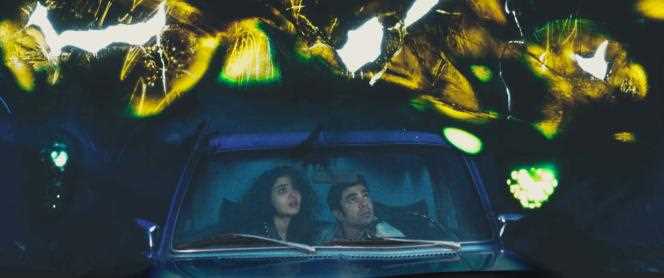THE OPINION OF THE “WORLD” – TO SEE
The traces of the Lebanese war (1975-1990), the representation of destruction, nourish the work of Joana Hadjithomas and Khalil Joreige, a couple of Lebanese filmmakers and visual artists – winners of the 2017 Marcel Duchamp Prize. These two self-taught, born in 1969, were just under 20 when they started taking photos in devastated Beirut. We owe them in particular these creations of “postcards” showing the ravages and bruises of the city, in reaction to those which resurfaced in the 1990s, immortalizing the dapper capital before the war with its seaside, as if nothing had happened.
Haunted by amnesia and latent conflicts, the work of Hadjithomas and Joreige proceeds by diversion, the unexpected, as when the directors took Catherine Deneuve on board for a furtive round trip between Beirut and the border with Israel, in the aptly named I want to see (2008).
Their fourth feature film, Memory Box, a fiction inspired by their experiences, works on the repression of memories, their return acting like a boomerang. Alex (Paloma Vauthier), a cheerful teenager, constantly connected with her friends, lives in Canada with her mother, of Lebanese origin, Maia (Rim Turki). She left Beirut in the early 1980s with her mother, the two women trying to forget their past. However, it will reappear, on Christmas Day, in the form of an enormous parcel from the post office: it is indeed filled with diaries, photos of Beirut and recordings that Maia, aged 13 to 18, continually emailed her best friend, Liza, who had fled Lebanon and was living in Paris.
Liza has just died and her parents decide to return her “archives” to Maia. Maia does not have the strength to go through them, on the other hand Alex immerses himself body and soul in them, discovering the tumultuous youth of his mother (played by Manal Issa), his first love, Raja (Hassan Akil), but also the daily life Beirut, the terror of the bombings, etc.
new wave soundtrack
The director Joana Hadjithomas herself had such material, from her correspondence with a friend, and for her part Khalil Joreige had stored up a whole stock of photos. The work of the film consisted in remaking the images, the notebooks, etc., by “embedding” the faces of the young actors recruited for the film. They are the ones who appear in the silver photos, which end up coming alive to bring the viewer into the flashback of the 1980s, with its new wave soundtrack.
You have 32.95% of this article left to read. The following is for subscribers only.
